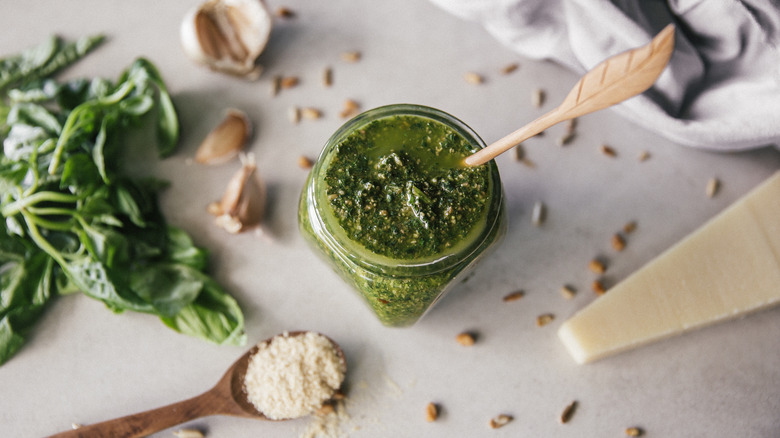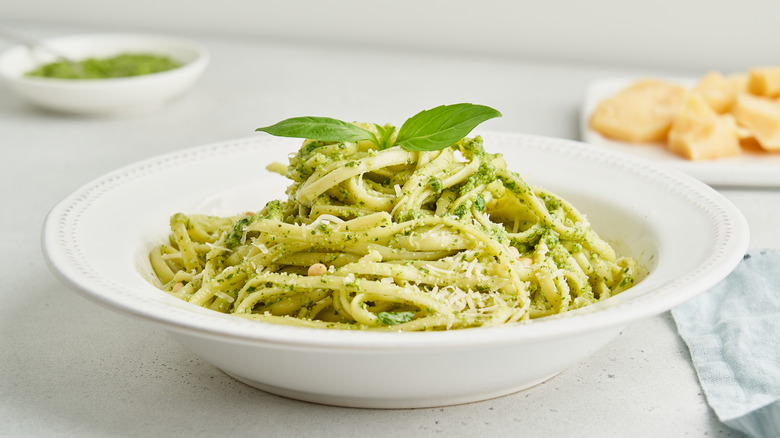Your Pesto Will Pop With Vibrant Color If You Blanch The Basil First
Blending up a batch of homemade basil pesto is always time well spent. But have you ever felt frustrated that your precisely prepared pesto doesn't have the same photogenic finish as your recipe's? Photoshop and professional lighting aside, food stylists have an easy hack to keep their basil pesto vibrantly green — blanching the basil leaves beforehand.
Basil, like other plants, contains decomposing enzymes that react to oxygen, so your bright green herbs will always start to brown when exposed to air. Stopping this process is fairly simple. As you assemble your mise en place, bring a pot of water to a rolling boil. Drop in your basil leaves and let them wilt for just a few seconds before pulling them out and submerging them in another bowl of ice water. With these two steps you'll have killed off those decomposing enzymes and stopped browning in its tracks. Blanching, of course, goes beyond basil and is a useful trick for other greens like spinach, parsley, green beans, or broccoli, among others.
It's important to note that immediately blending up these soaking wet leaves will defeat the purpose, so squeeze out as much water as you can first by hand and then by pressing with paper towels. When the leaves are dry, you're ready to blend them with garlic, pine nuts, Parmesan, salt, and olive oil for a delicious, traditional pesto preparation. As a bonus, blanched leaves also blend up a bit easier, so your resulting sauce will be smooth and well-emulsified.
Blanching drawbacks and even better basil pesto tips
Although blanching your basil will certainly result in a brighter green pesto, you might find that your sauce tastes, frankly, less like basil. When Christine Gallary at The Kitchn tried blanched versus unblanched basil pesto side-by-side, she found a clear winner. "Unblanched pesto by a mile," she says. "It tasted herbaceous, fresher, and well, like fresh basil." Our tip? Blanch your basil when you're adding basil pesto to a recipe with other strong flavors, like a salty, briny pasta salad you're bringing to a potluck. The bright green color will stand up over time without diminishing the overall taste.
If you're prepared to iterate on the traditional pesto Genovese recipe to prevent browning, try adding lemon as you blend the ingredients. The lemon's acidity will deactivate those now-familiar decomposing enzymes, so you'll get a spring-green pesto with a little lemony zip. Then, when you're ready to store your pesto for future use, add a layer of olive oil over the top. Covering the surface will prevent the pesto from oxidizing, keeping the color bright and the basil flavor fresh.

